All About Chocolate Mint
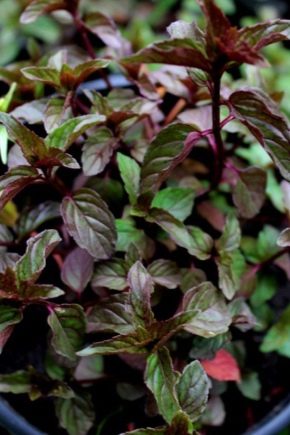
Chocolate mint is characterized by a very interesting shade of leaf plates, gives off pleasant aromas. This curious spice is widely used in cooking, as well as in cosmetology and even in folk medicine. In today's article, we will learn all the most interesting about chocolate mint.
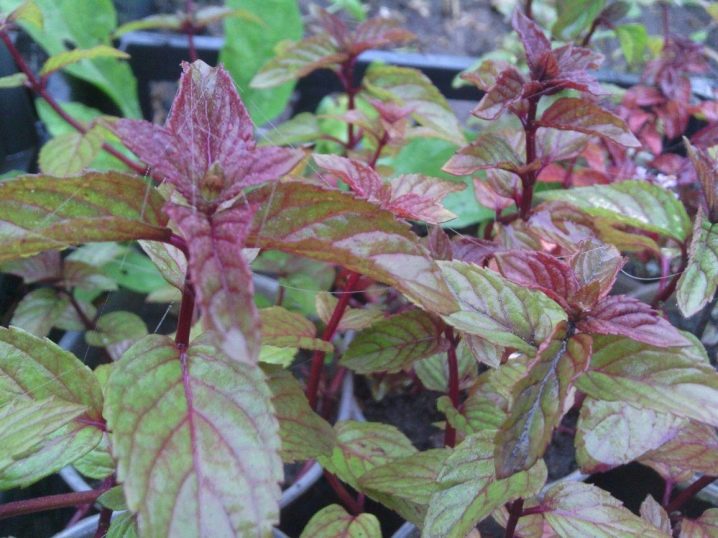
What it is?
Before understanding all the features and care procedures, it is advisable to answer the main question, what is chocolate mint. This is a perennial plant that has a rather pungent and specific odor. It contains a large amount of essential oils. The variety got its name due to the presence of a characteristic chocolate smell and a reddish shade of leaf plates.
Let's analyze a detailed description of this interesting and fragrant plant.
- The stalk of the chocolate mint grows strictly vertically. If you engage in the correct pinching of the tops of this plant, then it is possible to form a beautiful branched bush. Its height parameter usually reaches no more than 60 cm. The peel of the stalk of chocolate mint is rarely covered with small villi.
- The leaf blades of the plant are located opposite to each other.... The foliage is characterized by an elongated rounded structure, has a slightly wrinkled surface with veins. Characteristic notches are present on the marginal areas of the leaf blades. The hue of the foliage is one of the hallmarks of chocolate mint. It is dark green, combined with a purple-brown tone.
- The inflorescences of the original plant in question are made up of miniature purple flowers. They gather in elongated panicles.
- In places where chocolate mint blossoms are dead, very small seeds are formed. Their approximate size rarely exceeds 0.5 mm. After the ripening stage, the mint grains are covered with a pronounced black shell.
- The root system of the chocolate mint is horizontal. The roots of the fibrous type depart from the rhizomes.
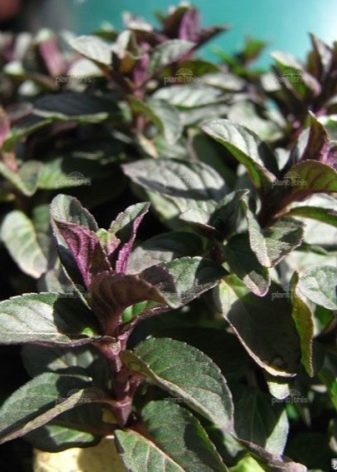

Compared to other varieties of similar plants, chocolate mint has a softer and more unobtrusive taste, as well as a good smell, reminiscent of chocolate. After eating, a person's mouth does not have the chill sensation characteristic of mint.
Where does it grow?
Many gardeners are interested in where chocolate mint grows best. It is worth noting that you can grow this plant in absolutely any summer cottage.... Usually the crop is planted in areas where there is good enough lighting or only partial shading. Before planting seedlings, the soil must be fertilized with manure.
Chocolate mint thrives in damp areas, so it can be planted in close proximity to water bodies, as well as in lowlands and even drainage ditches. This culture is also not afraid of acidic soils.
Chocolate mint can grow and develop remarkably all year long on a regular windowsill. It is advisable to place the plant on the south side.... In the winter season, the duration of daylight hours is increased by artificial methods. Additional lighting is ideal for these purposes. In addition, the culture will thrive in temperatures ranging from +20 to +23 degrees Celsius.
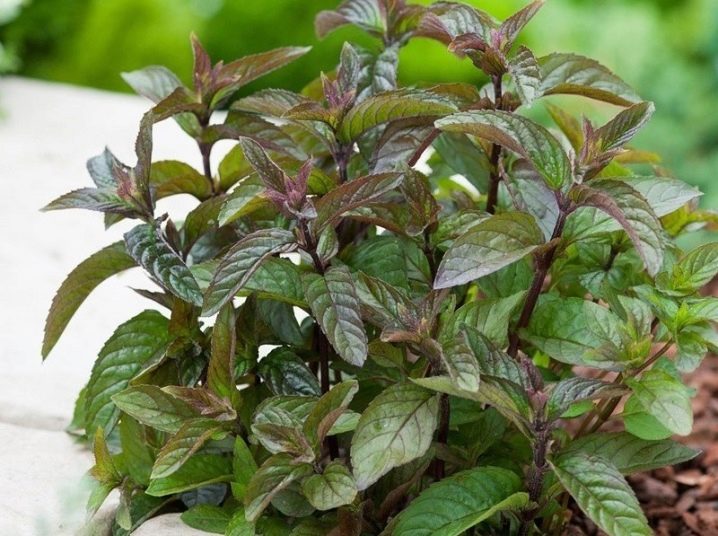
Landing
Planting an original and aromatic crop must follow a number of rules.We will understand all the features of such procedures.
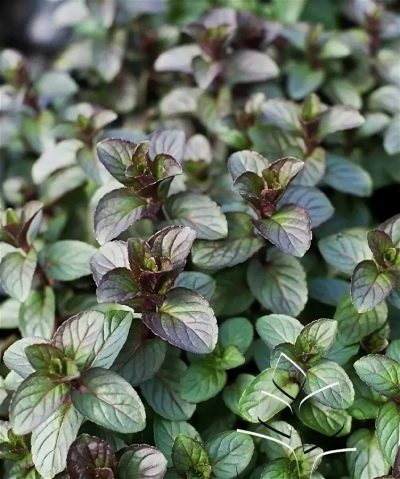
Timing
Sowing chocolate mint is best done in early spring or late autumn, shortly before the first winter cold. The indicated planting dates are the most productive and safe for the plant.
Seat preparation
The culture in question prefers to grow in places where the soil is loose and sufficiently breathable. Experienced gardeners and florists recommend adding humus and wood ash to the soil mixture.
You can visit a specialized gardening store to purchase universal soil for various plants here. When making a purchase, it is strongly recommended to keep under control the presence of lime in the mixture. If there is too much of this component, then such a soil mixture will lead to the smell of chocolate mint being too weak.
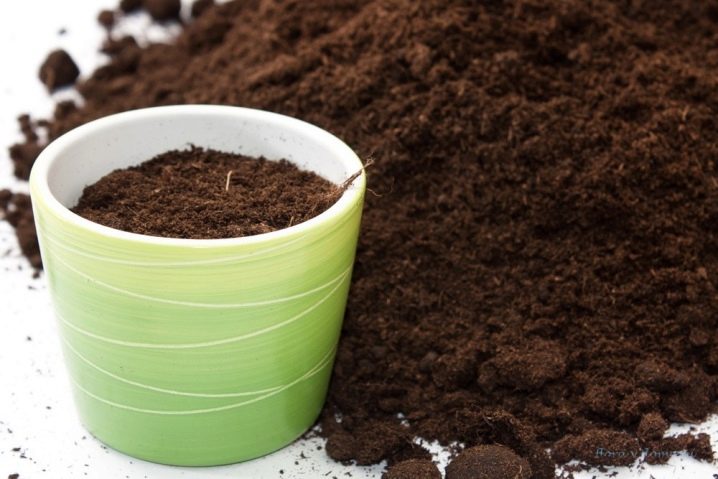
Having prepared a place for plants, you can plant them. Having completed sowing, future seedlings must be provided with the most comfortable conditions for further development. To do this, indoors, you need to maintain temperature conditions within 21-24 degrees Celsius. After moistening, the soil should be covered with a film or a piece of glass. If the seeds were planted in plastic containers, then ventilation holes in the walls must be made in them.
The first shoots of young plants will begin to break through in 14-21 days. It is recommended to place containers with chocolate mint on the western or northeastern windowsills.
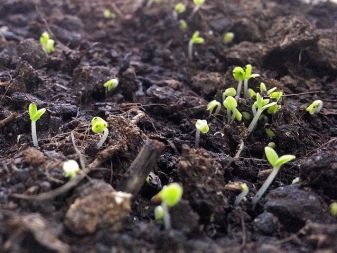

As soon as the seedling material grows up, it can be safely transplanted into separate drained pots or directly on the site. In this case, the composition of the soil can be the same as when planting seeds. It is advisable to transplant the culture to a place with light shading, diffused light. It is required to leave gaps of at least 40 cm between the bushes. It should be borne in mind that chocolate mint grows at a high speed.
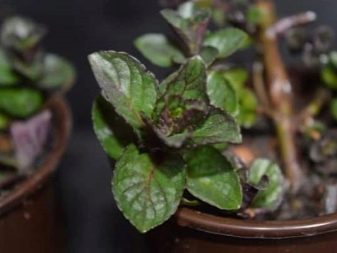
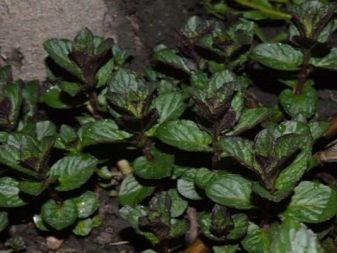
Care
Chocolate mint, like any plant, needs proper and regular care. The gardener should carry out a number of important care procedures so that the plant grows healthy and has strong immunity. Let's figure out the main activities that chocolate mint needs.
Watering
If you want to grow a really beautiful, healthy and fragrant plant, you need to water it properly. Watering must be done on a regular basis.... It should be borne in mind that the plant does not tolerate stagnation of water in the soil mixture, therefore, such situations should be avoided. Moisture should be moderate. If the culture grows at home, then the soil should always be kept moist, but there is no need to pour the liquid.
The aromatic plant in question responds very well to the spraying procedure. Thanks to such measures, an optimal humidity level is maintained. In addition, spraying removes dust accumulations on the surface of the chocolate mint leaf plates. Irrigation gives the crop a more well-groomed and vibrant appearance.

Top dressing
It should be noted that chocolate mint practically does not need additional feeding. It is recommended to avoid adding various products and mixtures for as long as possible. Organic and mineral fertilizers can change the flavor of the spice. If there is significant depletion, then the beds are allowed to be fed 1 time throughout the season. For such operations, products consisting of a mineral complex are best suited. The plant is fed after harvest.
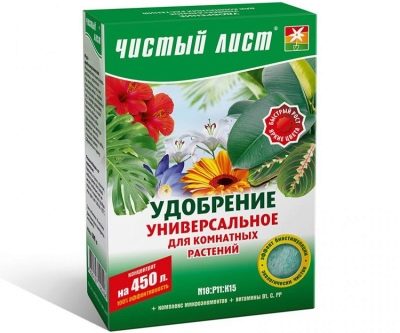
Weeding and loosening
The soil surrounded by young mint bushes must be regularly loosened. It is important to remove absolutely all weeds in a timely manner. When chocolate mint grows significantly and gains strength, it begins to drown out weed growth on its own.
The top of the plant in the course of its growth must be carefully and correctly pinched. Thanks to this, side shoots will be able to develop much faster and without unnecessary difficulties. As a result, the culture turns into a full-fledged bush, and the yield of leaves becomes more solid.
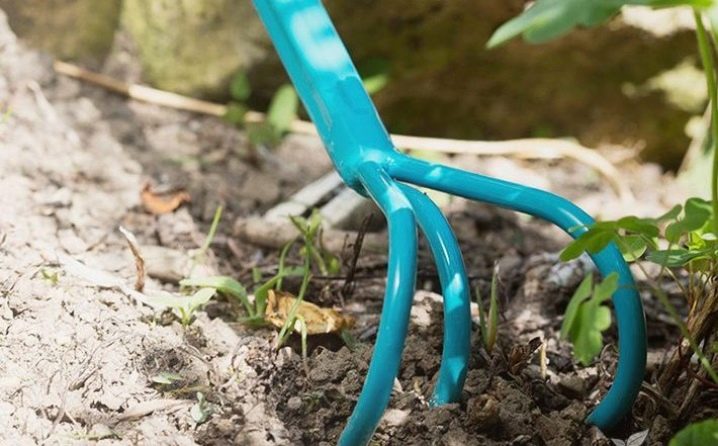
Diseases and pests
Chocolate mint can suffer from various diseases and pest attacks. Consider which parasites most often attack this interesting plant.
- Mint flea... Looks like a small beetle and a maggot. The pest actively gnaws round holes in mint leaf plates. The insect becomes especially aggressive in dry and warm spring conditions.
- Cicadca... This pest sucks all the juices out of chocolate mint. Because of this, the foliage of the plant inevitably dries up.
- Green shield beetle. And this pest manifests itself immediately after the growth of the culture. In addition, the green scabbard can start at the moments of especially intensive plant growth. Usually the parasite is engaged in gnawing the leaf edges, making round holes in the foliage.
- Aphid... A dangerous pest can settle at the bottom of the leaves. "Settlement" can be large-scale - in the form of entire colonies. Aphids actively damage the upper half of the mint shoots. Due to such destructive effects, the culture can stop forming healthy foliage. The growth of culture as a whole may stall.
- Peppermint leaf beetle. The pest usually seriously damages the edges of the foliage, and also gnaws characteristic holes in the plates.
- Slobbering penny. An unusual parasite that forms characteristic white and foamy lumps in the leaf sinuses. Often, the penny also affects the stem of the culture.
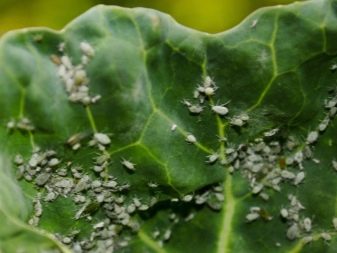
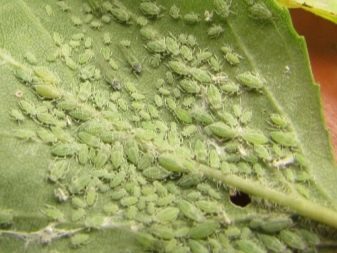
Pest insects can not only feed on chocolate mint, but also lay eggs on it.
Getting rid of parasites can cause certain difficulties, since it is undesirable to subject the culture to treatment with chemicals and preparations. It is recommended to use only folk remedies or various agricultural techniques. If such procedures do not lead to the desired results, then the spice can be sprayed with an insecticide 30 days before harvesting.
Chocolate mint can affect not only dangerous pests, but also no less dangerous diseases. Most often we are talking about:
- powdery mildew;
- rust.
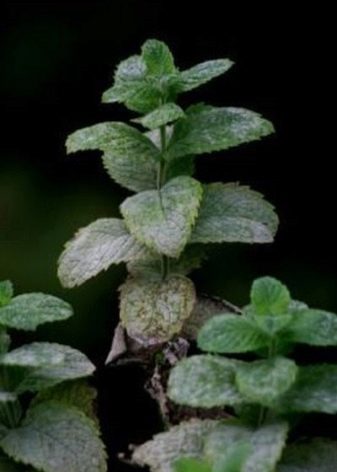
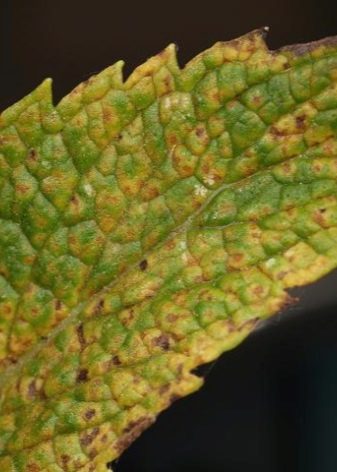
As a rule, only the cultivator is to blame for the developed diseases. So, the fungus can quickly develop in conditions of excessive plant density and increased dampness of the soil mixture. When a plant becomes ill, it is sprayed with colloidal sulfur a month before harvest.
The state of chocolate mint must always be monitored in order to identify its diseases and pest attacks in time. Only in this way will a person be able to timely take certain measures to improve and save the aromatic culture grown.
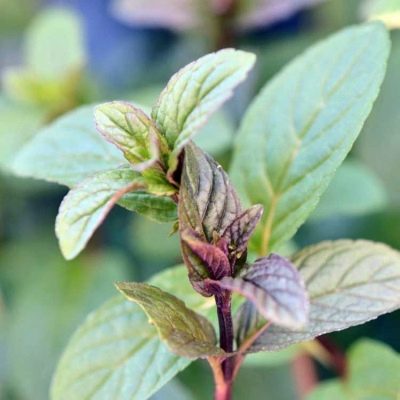
Collection and storage
Cutting mint leaves is carried out before the stage of their flowering or after flowering. With careful care for one season, it is possible to harvest at least 3 times. It must be borne in mind that it is not allowed to cut the stem under the very root, because because of this, the bush simply cannot recover quickly enough.
Even if only its leaves are needed from the plant, the twig can be removed entirely. The necessary particles are torn off after this step. No bare stems should remain on the chocolate mint.

If the harvest is planned to be consumed immediately, then the leaves should be sent to the refrigerator for storage. The collected material can be kept here for 2 days.
To keep the branches fresh, they can be pre-wrapped in a damp piece of cloth. Chocolate mint can be kept dry even longer. Under natural conditions, this will take 2 weeks. In this case, mint must be laid out in the shade and only in one layer.
If you need to speed up the drying process of mint, then you can use an oven or microwave. By means of such devices, mint can dry already within 6 hours.
The dried parts of the chocolate plant are collected in small bunches, after which they are hung in the barn. If you want the blanks to take away as little free space as possible, then the leaves can be ground into powder, and then put into sealed containers. So that the dried leaves of the plant in question do not lose their original aroma, they can be placed in a closed container made of glass.
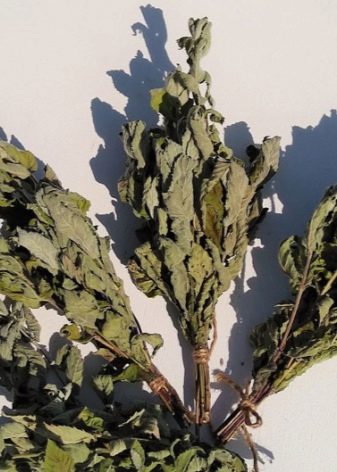
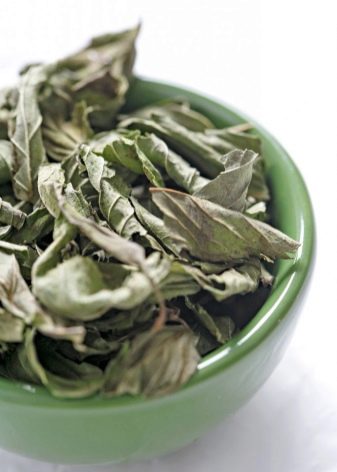













The comment was sent successfully.